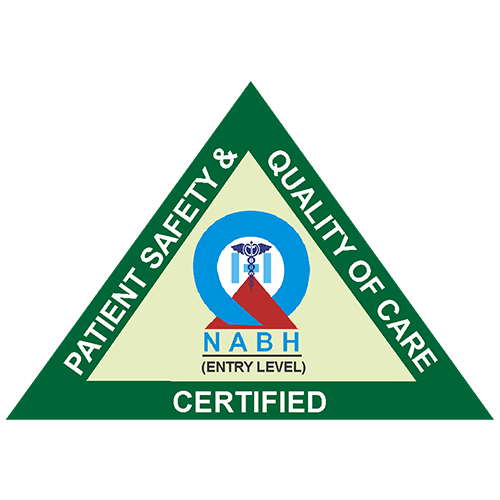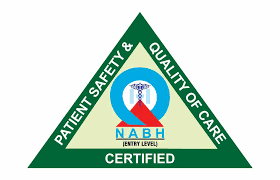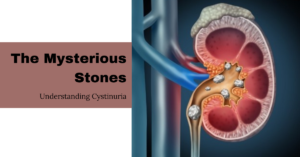Introduction:
Cystinuria is a term used to describe the presence of stones in the urinary system as a result of the accumulation of the amino acid cysteine. Cystine is a necessary amino acid for the production of proteins in our body. It is synthesised by the body and serves as a crucial component of skin, hair, and nails. The kidneys often filter out and reabsorb cysteine. Still, in this state, there may be too much cysteine in the urine, which promotes the formation of stones in the urinary system. Since this is a genetic issue, it can only exist when both parents pass on the defective genes. If these stones prevent the urine from passing, the patient typically complains of pain and difficulty urinating.
Amino Acids – An Essential Component!
Proteins, which are the building blocks of life, are composed of chemicals called amino acids. A few of the many tasks that proteins do are given below:
1) The body needs them for a number of processes, including digestion, muscle contraction, and blood clotting.
2) The body’s cells employ amino acids, which are formed when proteins are broken down, as a source of energy for their daily operations.
3) Proteins are found in several hormones that the body produces to help cells and tissues interact.
4) The uterus (elastin), bones (collagen), and nails (keratin protein) are just a few of the various body components that depend on proteins to recover to their pre-contraction states.
5) They assist in the production of antibodies that the body uses to combat sickness and infection as well as to heal by itself after an injury.
6) When the bodily cells break down the proteins to perform the above mentioned functions, amino acids are released. The following are the three different amino acids:
- Essential amino acids – They must be consumed through diet since the body cannot generate them.
- Nonessential amino acids – It is produced by the body; thus, food is not necessary to consume it.
- Conditional amino acids – They are optional amino acids and are needed only in certain disorders.
What Does Amino Acids Do Under Regular Circumstances?
Our human body incorporates an amino acid transport system to transport the amino acids to different parts of the body to carry out their functions. They are sent to the kidneys, the organs that control the fate of the substances entering and leaving the body, after being utilised by body cells. In order to maintain an equilibrium of the amino acid levels inside the body, the amino acids are typically filtered and reabsorbed within the internal units of the kidneys. In diseases like cystinuria, where the amino acid cysteine builds up in the urine and produces stones, this equilibrium is disturbed.
What Causes Cystinuria, and Why?
Cystinuria is caused by errors (mutations) in the SLC3A1 and SLC7A9 genes. The following is a list of cystinuria’s causes:
- These genes instruct the body to produce a protein for amino acid absorption. The residual amino acids enter the kidneys after the body has used them up, but the kidneys do not view them as waste.
- It’s because the body needs them for a variety of processes and metabolic processes taking place inside the body.
- The kidneys then return these amino acids into circulation. When a person has cystinuria, the amino acid cysteine is not properly reabsorbed by the kidneys and begins to crystallize, eventually leading to kidney stones.
- Cysteine is normally filtered by the kidneys and then released back into the bloodstream.
- Even so, in cystinuria, cystine accumulates in the urine because the gene in charge of this activity is damaged and unable to transport it back to the body.
- Other amino acids are also affected by this genetic flaw, but cystine is the most problematic since it can form stones and is the least soluble in urine.
- Additionally, there is no mechanism in place that may stop these cystine stones from forming.
- Less than 18 milligrams of cystine are typically excreted daily from the body.
- However, in cases with cystinuria, the level climbs to 300–500 milligrams per day, causing the urine to become saturated with cystine.
What Are a Few of the Most Common Symptoms and Signs of Cystinuria?
Cystinuria is a condition that has a lifelong impact on the person. The following symptoms appear when there are stones in the urinary tract, which makes it difficult for urine to pass:
- Existence of Flank Pain: This refers to intense pain in the back or side area. It usually affects one side, sometimes both sides, and makes the patient quite uncomfortable while urinating. Rarely, nausea and uneasiness accompany the pain, which also spreads to other areas such as the thigh, abdomen, and region between the stomach and thigh (groyne).
- Hematuria: This medical disorder causes blood to show up in the urine. It can be minute (only a microscope can identify the presence of blood in urine) or gross (the patient can see the presence of blood in the urine). Hematuria is frequently observed in patients.
- UTIs (Urinary Tract Infections): Urinary retention results from stones blocking the urine’s flow. This urine turns into a potential infection source and acts as a potential source for bacteria, raising the risk of urinary tract infections.
How Is Cystinuria Diagnosed?
The following list includes two types of techniques used to diagnose cystinuria:
1) Lab Examinations:
In order to examine the urine, the following tests are carried out.
- Urinalysis – This urine test looks for changes in the color and composition of urine as well as the presence of any urinary system abnormalities. The patient is instructed by the doctor to collect urine in a container, typically in the morning. Patients with cystinuria will see the following changes in their urine:
- The urine has a rotten egg odor.
- When examined under a microscope, hexagonal crystals are discovered, which may indicate that cystine is present in the urine.
- Sodium Cyanide-Nitroprusside Test: In this technique, urine is treated with sodium nitroprusside, and within five to ten minutes, when urine turns purple, it is indicative of cystinuria.
- 24-Hour Urine Test – In this technique, urine is collected for a full day (24 hours), and the results of the test are sent to the doctor after being analyzed. The goal of this test is to evaluate cystine levels. The patient is at risk of forming a stone if the cysteine levels are 250 mg/L or higher.
2) Imaging Tests:
In order to establish a certain diagnosis, the following imaging tests are performed:
- An imaging examination called an ultrasound can be used to find stones, primarily in children and pregnant women. Although the ultrasound usually detects stones larger than 4 millimetres, it is impossible to say with certainty that they are cystine stones. This is because ultrasound cannot determine the composition of the stones.
- CT scans, or Computed Tomography – To determine whether kidney stones are present, X-ray images of the body’s internal organs are acquired.
How Can Cystinuria be Treated?
The course of treatment depends on how severe the problem is, and surgery is not always necessary; medicines and lifestyle adjustments can also offer relief. Following is a list of some prevalent treatment options:
- Alterations to Diet: If cystinuria is found in the patient, the following dietary adjustments are necessary:
- Salt consumption should be kept to fewer than 2 grams per day to prevent the development of stones.
- Large levels of proteins found in animal products, including chicken, beef, fish, and milk, cause stones to crystallize and cause the urine to become acidic. As a result, it’s important to limit the intake of these foods.
- It is really advised that the patient has to drink enough water to raise urine concentration and stop the development of stones.
- Citrates, which are included in orange juice and lemon water, prevent the development of stones, so it is recommended that you consume them as often as you can.
- Urine pH: It’s important to keep urine’s pH over seven (alkaline). As with an alkaline pH, cystine dissolves quickly in the urine rather than building up stones. Urine’s pH can be raised with the help of medications like Potassium citrate and Acetazolamide.
- Drugs: Some drugs, such as D-Penicillamine and Alpha-mercapto propionyl glycine, combine to dissolve the stones within the urine, allowing urine to flow.
- Surgical Techniques: The following surgical techniques must be used if the discomfort is intolerable and the stones are big enough to impede the urine flow.
- Extracorporeal Shock Wave Lithotripsy (ESWL) – During this process, stones are broken up into smaller pieces by the body’s shock waves, allowing them to move through the urine more quickly.
- Percutaneous Nephrolithotomy – This procedure involves making an incision in the back to remove stones that are typically more than 2 cm in diameter if they have grown to a very large size and the pain is intolerable. To remove the stone directly or to cut it into smaller pieces, a tube with a telescope is introduced into the incision.
Conclusion:
Although cystinuria is an inherited disorder that affects a person’s entire life, it has no negative effects on other body parts. It frequently occurs in young people. The illness is not life-threatening and rarely results in permanent kidney damage, so the patient should not worry about it. To effectively manage the illness, it is crucial to visit a doctor if any pain or symptoms of a urinary obstruction are present. If the illness is treated as soon as possible, the patient will lead a healthy life.





